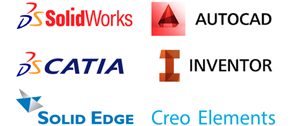After months of negotiations, Apple this week completed its purchase of PrimeSense, the leading provider of 3D sensing technology.
The purchase gives Apple an edge over rivals like Microsoft, Google and Samsung as competition to develop the next breakthrough consumer device intensifies. PrimeSense’s technology could make it possible for Apple to be first to market with smart devices that include 3D cameras.
On smartphones and tablets, the ability to “see” in 3D will lead to a new generation of apps ranging from games that incorporate scanned models of the real world to online shopping experiences that are perfectly tailored to a shopper’s shape and size.
On smart TVs, 3D sensors will likely be combined with technology like voice and facial recognition to allow for far more natural interactions. Instead of painfully navigating an on-screen keyboard, users will be able to simply tell their TVs the name of the video they want to watch on YouTube or Netflix. Over time, a smart TV could also get to know a viewer’s preferences and automatically recommend new content.
News that the deal had been closed was first reported by the Israeli business news provider Globes on Sunday and later confirmed by an Apple spokeswoman. Kristin Huguet said in a statement to AllThingsD, “Apple buys smaller technology companies from time to time, and we generally do not discuss our purpose or plans.”
Apple reportedly paid $360 million for PrimeSense.
In an interview with Forbes.com a few weeks before the acquisition was finalized, Tal Dagan, vice president of marketing for PrimeSense, said, “we are deeply involved with a couple of projects, and, yes, I think you will see 3D capabilities in a phone or tablet in 2014.”
The successful introduction of a 3D iPhone or tablet could vindicate Apple investors who have held onto their shares in hopes that the company would continue to deliver innovative products after the passing of Steve Jobs.
But even with the acquisition of PrimeSense, significant challenges remain. As one Forbes reader pointed out the last time I wrote about PrimeSense, the 3D sensing technology is just one piece of the puzzle in creating a 3D ecosystem. Apple will have to nail the entire 3D experience, including cloud processing and developer tools.
Meanwhile, competitors are closing in. Pelican Imaging, a startup based in Mountain View, has completed a reference design for a 3D camera for cell phones and tablets that it claims has been picked up by at least one major manufacturer. Google holds multiple patents on 3D technology, and Microsoft has heavily invested in 3D sensing technology.
While the original version of the Kinect was built on PrimeSense technology, the new Kinect for Xbox One, released on Friday, is based on technology Microsoft either developed itself or acquired. Early demos have been impressive. For example, the resolution of the new Kinect is high enough to measure a person’s heartbeat based on minute changes in his or her skin tone, or so Microsoft claims.
“It just looks so much better,” said Suran Goonatilake, the CEO of Bodymetrics, which has built a body scanner based on PrimeSense’s technology.
While acquiring PrimeSense gives Apple an edge, the advantage may prove to be short-lived if Apple fails to follow up with continued improvements.
via apple - Google News http://news.google.com/news/url?sa=t&fd=R&usg=AFQjCNHQ7zhGzl1Hdp8XFUHhEgKsJdbrIA&url=http://www.forbes.com/sites/eliseackerman/2013/11/25/apple-gains-edge-in-3d-sensing-confirms-purchase-of-israeli-startup/














0 comments:
Post a Comment